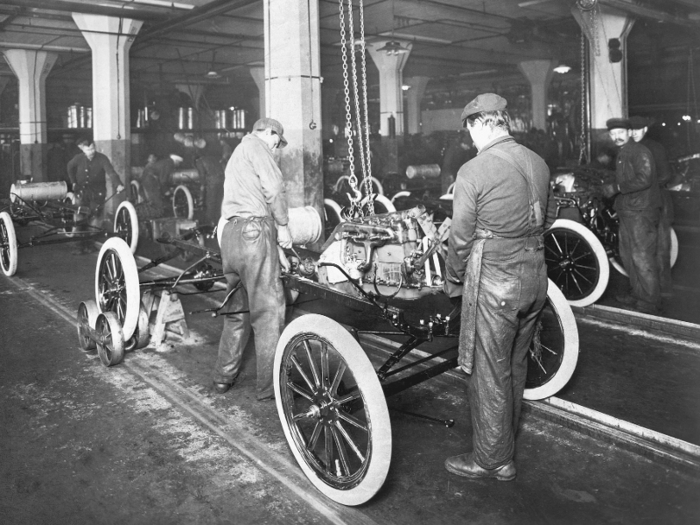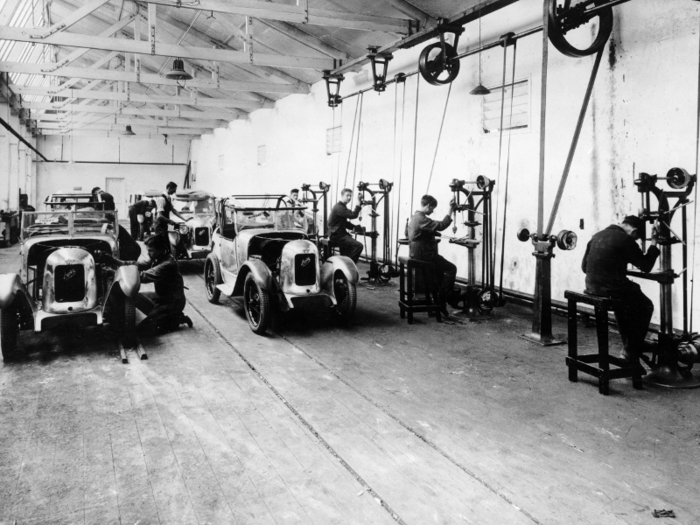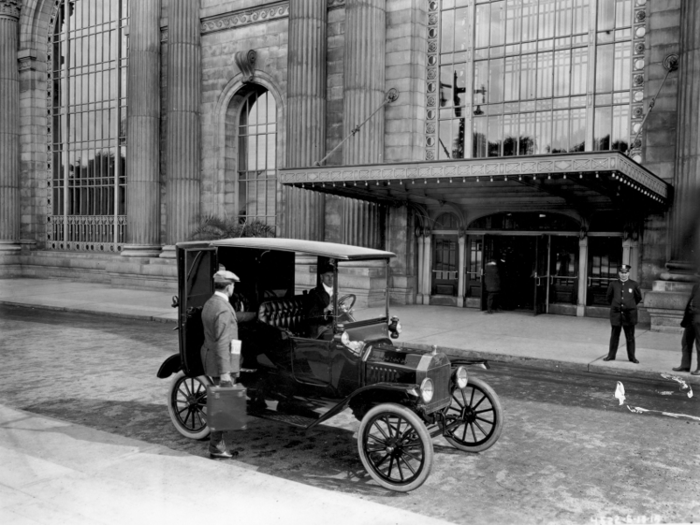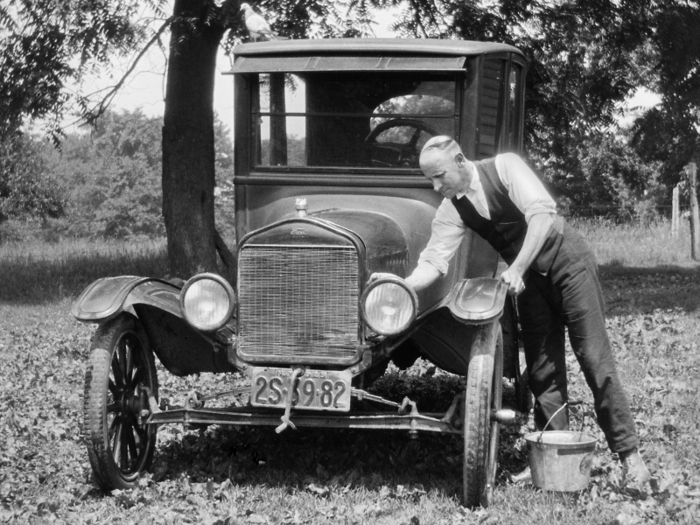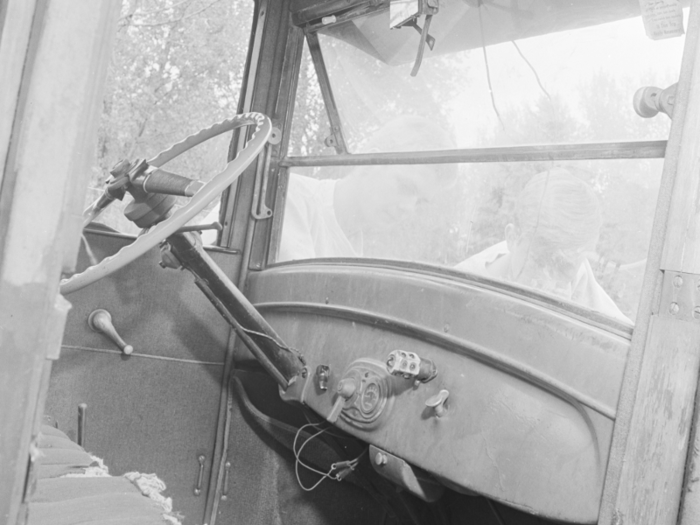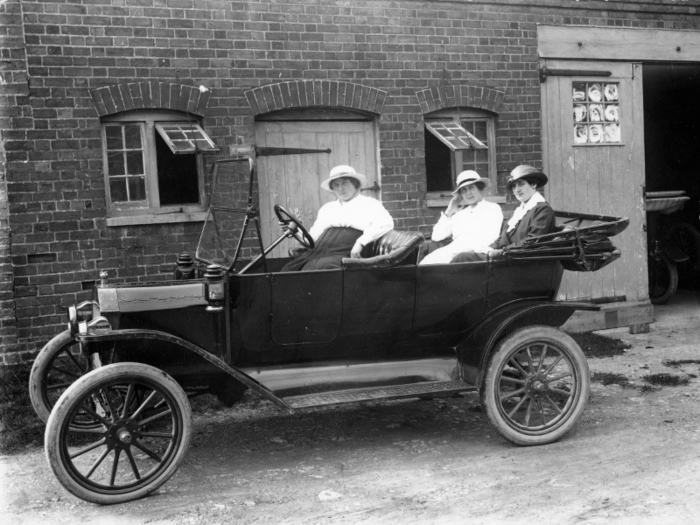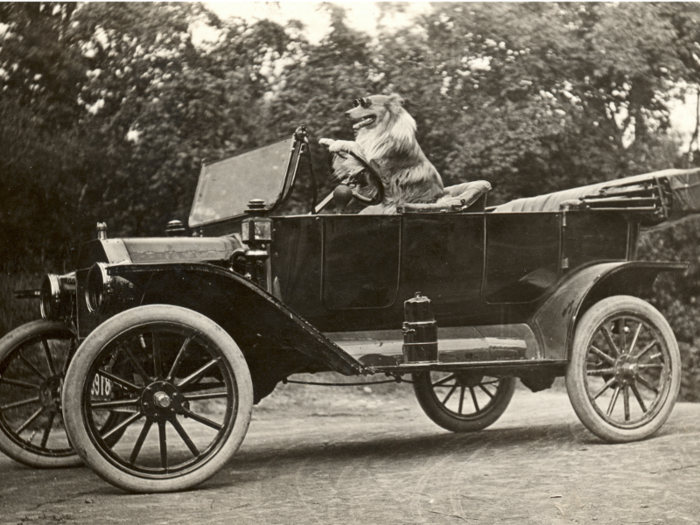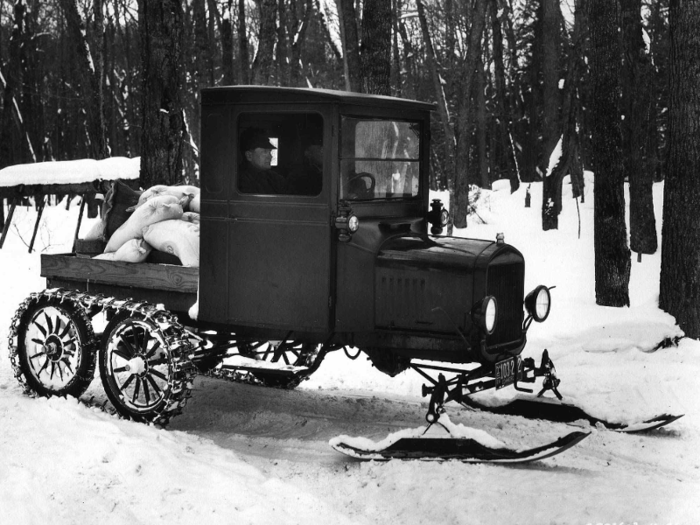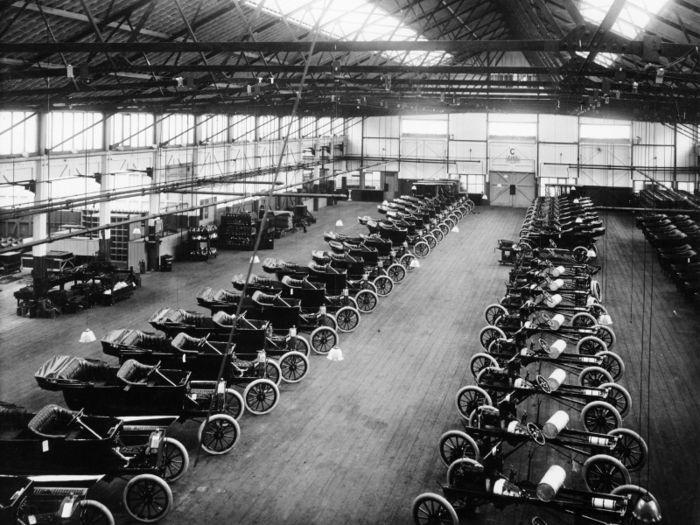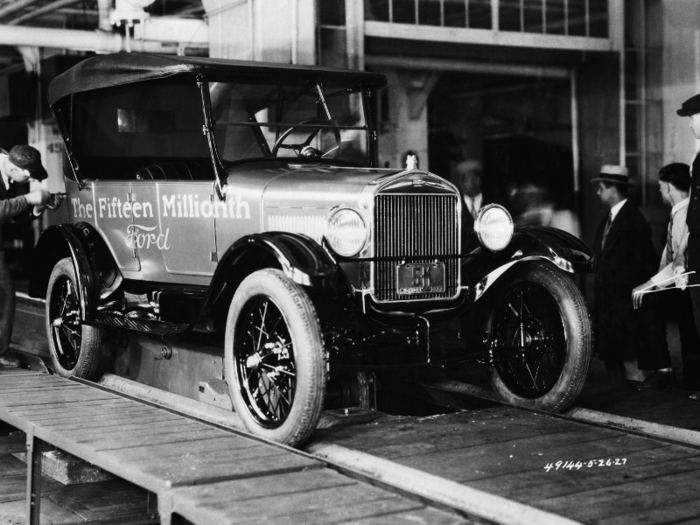He started the assembly line in the famous Ford factory in Detroit, Michigan.
It took 84 steps to create a Model T in the Ford factory.
Since each worker only had to specialize in one step of the car-making process, Ford was able to hire unskilled workers with no background in the automotive industry.
Before the game-changing Model T, cars and carriages were luxury items, reserved for the elite.
The Model T, however, was affordable and built for everyday, ordinary people.
There were no tariffs placed on cars because they were made within the States, keeping the prices low. Ford was also using cheaper material to build his Model T cars. At its peak, the Model T cost just $575, which was less than the average annual salary for most Americans.
The Model T was equipped with a 22-horsepower and four-cylinder engine.
There was nothing flashy about the Model T, however.
The car quickly spread across the US, becoming a cultural phenomenon.
At the time, women had just earned the right to vote and saw the new car as another form of freedom.
"By owning a Ford car, a woman can with ease widen her sphere of interests without extra time or effort," one advertisement read at the time. "She can accomplish more daily, yet easily keep pace with her usual schedule of domestic obligations."
Some dogs even enjoyed a ride in the famous car.
The Model T was popular amongst most.
Meanwhile, others turned the famous design into snowmobiles to get around in the tougher climates.
Virgil D. White turned his Model T into a snowmobile in 1913. At the time, roads were still underdeveloped and plowing was rarely done in the middle of nowhere. The car, paired with sled riders, helped people in out-of-way areas get around.
By the end of the '20s, there were millions of Model Ts on the road.
May 26, 1927, not only marked the day that the last Model T was produced but also the day the 15th million Model T was made.

